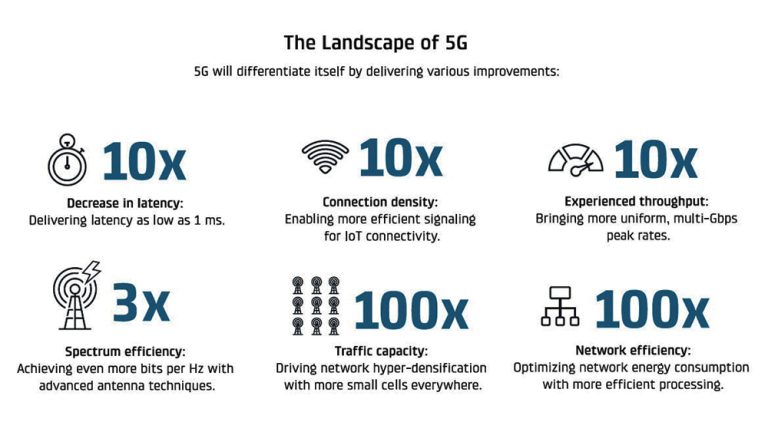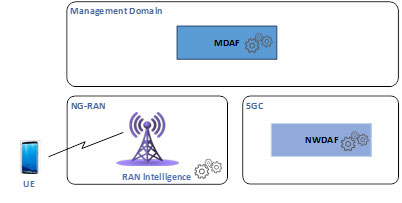5G Antenna Technology: Enhancing Range, Speed, and Signal Quality
telcomatraining.com – The rollout of 5G networks marks a transformative leap in wireless communication, delivering lightning-fast data speeds, ultra-low latency, and massive connectivity. At the heart of this revolution lies one of the most crucial components of any wireless infrastructure: the antenna. 5G antenna technology has evolved beyond traditional designs, integrating advanced concepts like Massive MIMO, beamforming, and millimeter-wave (mmWave) frequencies to enhance range, speed, and signal quality.
Understanding the Evolution of 5G Antennas
Unlike 4G LTE systems that rely mainly on omnidirectional antennas, 5G networks utilize a new generation of intelligent, high-frequency antennas capable of managing vast amounts of data traffic. The shift toward higher frequencies — particularly in the mmWave band (24 GHz to 100 GHz) — allows 5G to achieve data rates exceeding 10 Gbps. However, these higher frequencies come with shorter transmission ranges, which has driven innovation in antenna design.
To overcome these challenges, engineers have turned to compact, high-gain antenna arrays that can precisely direct radio signals to users. This shift has made antenna systems not just passive radiators but active, adaptive components that optimize wireless performance in real-time.
Massive MIMO: The Foundation of 5G Connectivity
One of the defining technologies in modern 5G antenna systems is Massive Multiple Input Multiple Output (Massive MIMO). Traditional antennas might use two or four elements, but 5G base stations can integrate dozens or even hundreds. Each element transmits and receives data streams simultaneously, increasing network capacity and spectral efficiency.
This technology enables a single 5G tower to serve far more users at once without congestion. It also enhances data throughput and reliability — key factors in supporting bandwidth-intensive applications such as augmented reality (AR), virtual reality (VR), and industrial IoT.
Beamforming: Precision for Better Signal Quality
Beamforming is another key innovation in 5G antenna technology. Instead of broadcasting signals in all directions, beamforming focuses wireless energy toward specific users or devices. This targeted approach minimizes interference, boosts signal strength, and improves connection stability.
For users, beamforming translates into faster downloads, smoother video streaming, and stronger connectivity even in crowded urban environments. For operators, it improves spectrum utilization and energy efficiency — critical advantages for large-scale 5G deployments.
mmWave Antennas and Small Cell Integration
Millimeter-wave technology offers unparalleled speed and bandwidth but struggles with penetration through obstacles like buildings and trees. To mitigate this, 5G networks deploy small cells — compact, low-power antenna units placed closer to end users. These small cells extend coverage, fill in dead zones, and ensure consistent connectivity in dense urban areas, stadiums, and transport hubs.
Advanced antenna designs, including phased arrays and hybrid beam-steering mechanisms, make mmWave signals more robust. Combined with sub-6 GHz frequencies, they create a balanced 5G infrastructure that delivers both broad coverage and high performance.
The Future of 5G Antenna Innovation
As 5G continues to evolve, antenna technology will play a pivotal role in enabling future applications like autonomous vehicles, remote surgery, and immersive digital experiences. The next wave of development includes reconfigurable intelligent surfaces (RIS) — smart panels that can dynamically reflect and redirect wireless signals for optimal coverage.
Moreover, the move toward 6G will likely bring even more compact, energy-efficient, and AI-driven antenna systems capable of self-optimizing in real time.
Conclusion
5G antenna technology is the backbone of next-generation connectivity, enhancing range, speed, and signal quality through advanced engineering and innovation. With technologies such as Massive MIMO, beamforming, and mmWave integration, antennas are transforming from simple transmitters into intelligent systems that shape the future of communication. As the world moves toward a fully connected digital ecosystem, 5G antennas will continue to define how fast, reliable, and responsive our networks can become.







